8. Old School
Built in 1746
Built as the Vicarage of "St. Anton
und St. Nikolaus". Used as a local
town school and as the teacher`s
residence from 1822 to 1897.
The house, which was erected by a vicar of the canonic chapter in 1746, was auctioned by the French government in 1802, following the secularisation of the abbey, and bought by the City of Münstermaifeld as a school building in 1819. Following the closure of the abbey’s Latin school, the City had to increase its schooling involvement. With the establishment of a teachers’ training college (1878-1926), Münstermaifeld could once again continue the tradition of an educational city that was associated with the Latin school. This has been continued to this very day, with high an school of more than 1,000 pupils.
The vicar Caspar Nebgen from Niederelbert in the Westerwald had built the original house in 1743-1746 with his own funds.
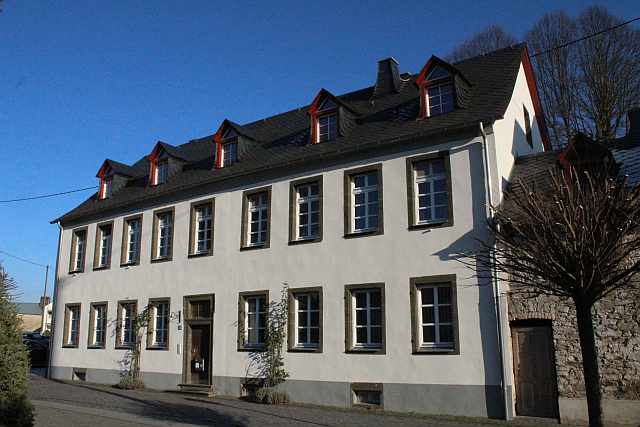
He had been vicar of the St. Nicholas and St. Anthony altar in the collegiate church since 1725 and remained so until his death in 1779. As vicar, he had to hold the masses and annual memorial services donated at this altar. In return, he was entitled to the income from the donations of the benefactors. The St. Nicholas altar was donated in 1295, the St. Anthony altar in 1321. Both were united in 1660.
After the dissolution of the monastery, the vicarage house was auctioned off and initially became private property. After the closure of the monastery's Latin school, there was still a "German school" for which a town schoolhouse had been built in 1714.
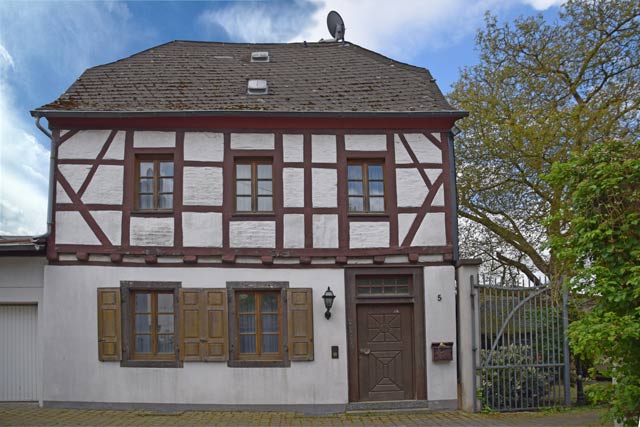
Boys and girls were taught here until 1820. In the meantime, the town had bought the former vicarage house and expanded and furnished it as a school for boys and girls.
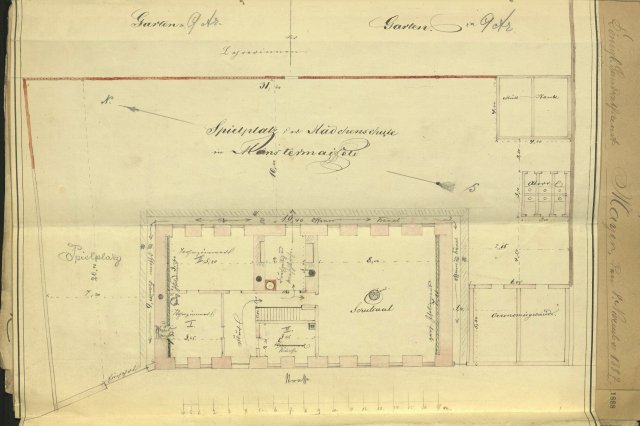
With the growing number of pupils, the girls had to move to the abandoned Heilig-Geist-Spital in 1841. The boys were able to attend the preparatory school of the newly founded teachers' seminary from 1880. The girls returned to the former vicarage building. A new primary schools was not built until 1897, in the face of opposition from the town. Girls were initially taught here, and after the closure of the preparatory school of the teachers' seminary in 1925, boys were also taught here until 1970. The former vicarage building came into private ownership and was thoroughly renovated from 2000 to 2018.
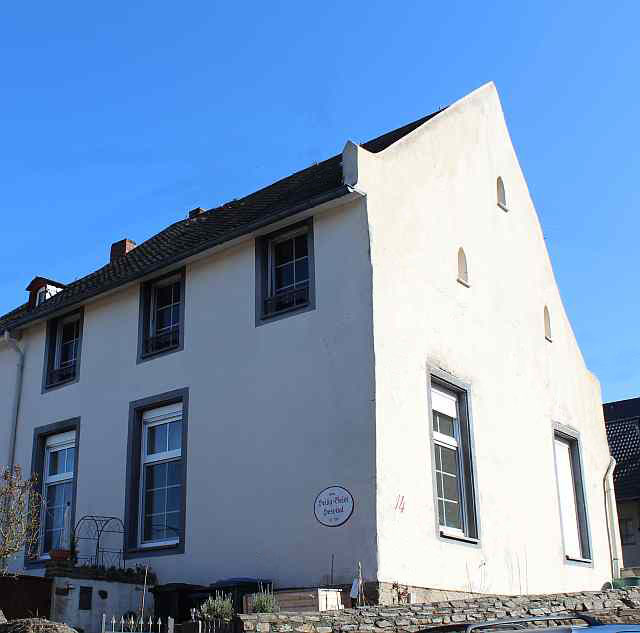
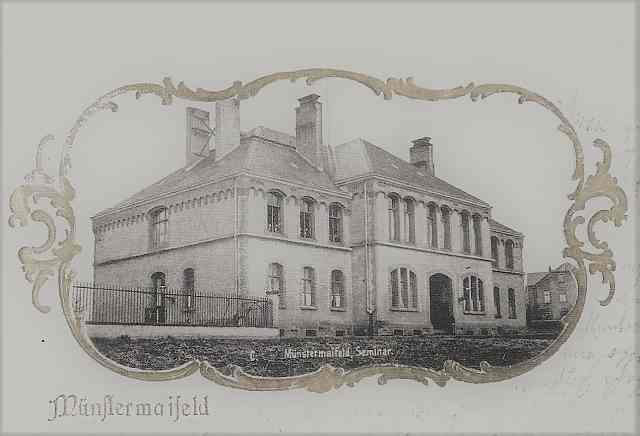
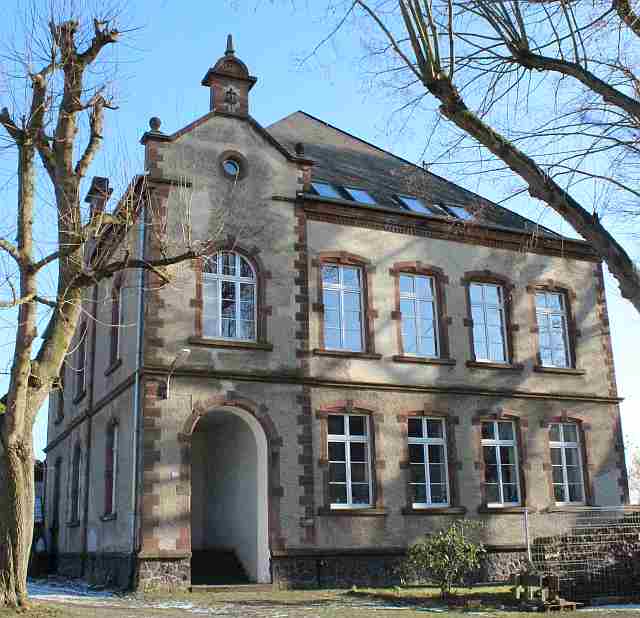
Just as the monastery's Latin school had a supra-regional impact, the teachers' seminary, with over 1000 graduates, carried Münstermaifeld's reputation as a school town via the village schools to the entire Eifel region. Münstermaifeld remained a school town thereafter. Since the foundation of a grammar school in 1923 and its transformation into a full-time grammar school in 1980, more than 3000 pupils left the small town with the Abitur. Today's Kurfürst Balduin Gymnasium, with over 1000 pupils, preserves the tradition of the school town of Münstermaifeld in its school park. The building of the teacher's seminar from 1890 continues to be used, as does the "Weckbecker Schlösschen" from 1844/45, which stands on the grounds of the school. This classicist villa
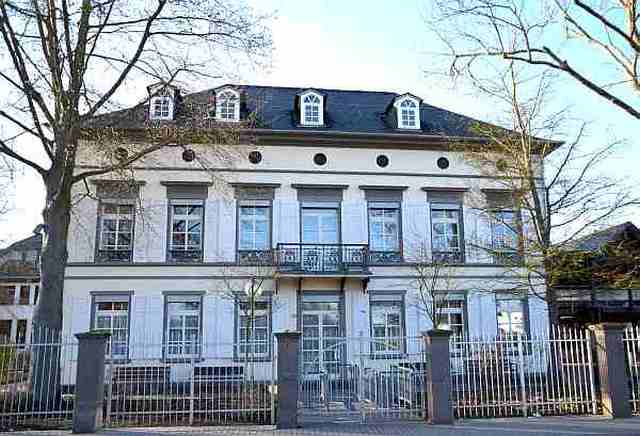
was a gift from Franz Georg Severus Weckbecker, who had become rich through real estate transactions, to his son Karl on the occasion of his marriage in 1844 to Nanny Frings. Today, the villa houses the school administration.
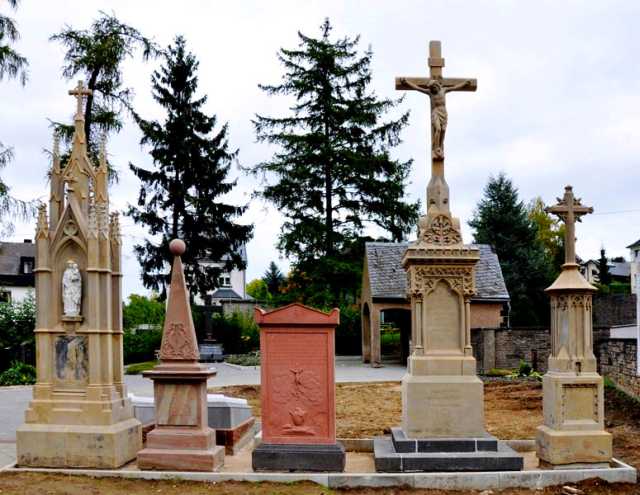
Glossary
Secularisation
In 1802, ecclesiastical relations in the territories on the left bank of the Rhine annexed by France were reorganised. With the exception of the bishoprics and parishes, almost all ecclesiastical institutions were abolished and their property transferred to the French state. All clergy affected by this received an annual pension of 500 (for those under 60) or 600 francs (over 60). In order to improve the finances of the French state, the secularised properties were auctioned off in the following years and went predominantly to private buyers. With the large number of ecclesiastical institutes in the former archbishopric of Trier, there was a drastic redistribution of property ownership, also in the Maifeld.
Vikar
The vicars had the task of saying the endowed masses and annual memorial services at the altars assigned to them. Their number depended on the number of altars. There is evidence of a total of 27 altars. When several altars were merged in 1660, the number of vicars also decreased. In the administration of their goods and income, they were subordinate to the chapter.
"Weckbecker Schlösschen"
When Carl Franz Weckbecker died in 1862, three months before his father, he left behind the widow Maria Anna Frings with seven minor children. He had stayed with his father and helped him in the business management. From 1844, he lived with his family in the neo-classical "Weckbecker Schlösschen." He was one of the founding members of the Münstermaifeld Music Association in 1858. His children, unlike those of his siblings, did not find themselves in villas and castles later in life. His son Christian Arthur, 21 years young, signed on as a sailor on the cargo ship "Undine" in London at the beginning of March 1874. The ship's destination was Otago in New Zealand. On 15 March 1874, his death was entered in the logbook. He was buried at sea. On 19 January 1875, his legacy was registered with the Board of Trade in London. After the sale of his property, his heirs were left with 3 pounds, 15 shillings and 1 penny. By this time his brother Carl Maria Eduard, 5 years his senior, had already begun his theatrical career. In this year he is listed as a chorister in the Almanac of the Cooperative of German Stage Members. Stations in his career as a chorister, some times also as a soloist, since 1888 only as a prompter are Hamburg, Altona, Münster, Königsberg, Berlin, Kassel, Erfurt, Bucharest, Gera, Kiel, Magdeburg, Posen and as his last engagement in 1903/04 St. Petersburg. Eduard, unemployed, died in Berlin in 1905. Another son, Emil, who worked as an accountant, died in Frankfurt in 1900 in a "lunatic asylum." His son Franz Georg was a bookseller in Munich. Oscar worked as an insurance inspector until his death. The life of his son Karl Albert, who married Maria Brunswicker in Neuwied in 1888, remains to be clarified.
Franz-Georg-Severus Weckbecker
He was born on 2 July 1775 in Sevenich. He earned his first money by supplying fodder to the warring parties of the Revolutionary Wars. When the French state auctioned off the domains after 1802, he was one of the most successful bidders. He not only increased ecclesiastical estates, but also bid for bourgeois and aristocratic properties. The town bought the vicarage house from him in 1820, which then became the "Old School". He also increased his fortune with the skilfully timed buying and selling of land products. He died on 16 March 1862, leaving behind in the town's memory the image of a successful up-and-comer and, with the "Weckbecker Villa", a successful example of the classicist architectural style. The autobiography of his eldest son Peter Weckbecker presents his father Franz Georg as an energetic, intelligent man whose school education was completed with three years of winter school. He found his purpose in life in increasing his wealth. It was his two wives who ensured that the 15 of his 22 children who survived infancy received a good education. Thus, in the families of the numerous descendants, we find biographies that strayed far from the father's example. For all of them, however, their father's wealth was the basis for a professional career, business success or a status-enhancing marriage. The gravestones of his family remind us that he had left the standards of his fellow citizens not only in life but also beyond death.



